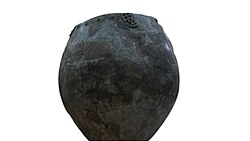➶ Download PNG/SVG/JPEG
➶ 100% FREE
➶ No login required
Customize
Edit text, upload photos, change colors, fonts and more
Instant download
SVG PNG, JPG or Print PDF format
Share
Print or share digitally social media, link, what's app or email.
The origins of wine predate written records, and modern archaeology is still uncertain about the details of the first cultivation of wild grapevines. It has been hypothesized that early humans climbed trees to pick berries, liked their sugary flavor, and then began collecting them. After a few days with fermentation setting in, juice at the bottom of any container would begin producing low-alcohol wine. According to this theory, things changed around 10,000–8000 BC with the transition from a nomadic to a sedentary style of living, which led to agriculture and wine domestication.[22]

Wild grapes grow in the Caucasus region (Armenia, Azerbaijan, Georgia), the northern Levant, coastal and southeastern Turkey, and northern Iran. The fermenting of strains of this wild Vitis vinifera subsp. sylvestris (the ancestor of the modern wine grape, V. vinifera) would have become easier following the development of pottery during the later Neolithic, c. 11,000 BC. The earliest discovered evidence, however, dates from several millennia later.
Following the voyages of Columbus, grape culture and wine making were transported from the Old World to the New. Spanish missionaries took viticulture to Chile and Argentina in the mid-16th century and to Baja California in the 18th. With the flood of European immigration in the 19th and early 20th centuries, modern industries based on imported V. vinifera grapes were developed. The prime wine-growing regions of South America were established in the foothills of the Andes Mountains. In California the centre of viticulture shifted from the southern missions to the Central Valley and the northern counties of Sonoma, Napa, and Mendocino.[23]
Wine fermentation[edit]
The earliest archaeological evidence of wine fermentation found has been at sites in Georgia (c. 6000 BC),[24][25][26][27] Hajj Firuz, West Azerbaijan province of Iran (c. 5000 BC),[3][28] Greece (c. 4500 BC), and Sicily (c. 4000 BC).[12] The earliest evidence of steady production of wine has been found in Armenia (c. 4100 BC)[29][30][31][32] while the earliest evidence of a grape and rice mixed based fermented drink was found in ancient China (c. 7000 BC),.[13][14][15][16][17][33][34] The Iranian jars contained a form of retsina, using turpentine pine resin to more effectively seal and preserve the wine and is the earliest firm evidence of wine production to date.[35][29][30][31][32] Production spread to other sites in Greater Iran and Greek Macedonia by c. 4500 BC. The Greek site is notable for the recovery at the site of the remnants of crushed grapes.[36]

The oldest-known winery was discovered in the “Areni-1” cave in Vayots Dzor, Armenia. Dated to c. 4100 BC, the site contained a wine press, fermentation vats, jars, and cups.[37][38][39][40] Archaeologists also found V. vinifera seeds and vines. Commenting on the importance of the find, McGovern said, “The fact that winemaking was already so well developed in 4000 BC suggests that the technology probably goes back much earlier.”[40][41]
The seeds were from Vitis vinifera, a grape still used to make wine.[32] The cave remains date to about 4000 BC. This is 900 years before the earliest comparable wine remains, found in Egyptian tombs.[42][43]
The fame of Persian wine has been well known in ancient times. The carvings on the Audience Hall, known as Apadana Palace, in Persepolis, demonstrate soldiers of subjected nations by the Persian Empire bringing gifts to the Persian king.

Domesticated grapes were abundant in the Near East from the beginning of the early Bronze Age, starting in 3200 BC. There is also increasingly abundant evidence for winemaking in Sumer and Egypt in the 3rd millennium BC.[44]
Legends of discovery[edit]

There are many etiological myths told about the first cultivation of the grapevine and fermentation of wine.
The Biblical Book of Genesis first mentions the production of wine by Noah following the Great Flood.
Greek mythology placed the childhood of Dionysus and his discovery of viticulture at Mount Nysa but had him teach the practice to the peoples of central Anatolia. Because of this, he was rewarded to become a god of wine.
In Persian legend, King Jamshid banished a lady of his harem, causing her to become despondent and contemplate suicide. Going to the king’s warehouse, the woman sought out a jar marked “poison” containing the remnants of the grapes that had spoiled and were now deemed undrinkable. After drinking the fermented wine, she found her spirits lifted. She took her discovery to the king, who became so enamored of his new drink that he not only accepted the woman back but also decreed that all grapes grown in Persepolis would be devoted to winemaking.[45] cc


